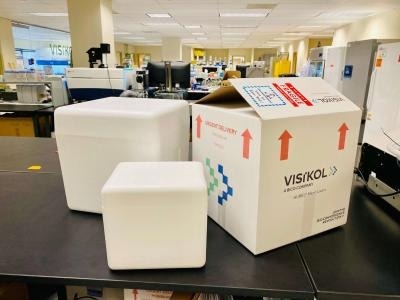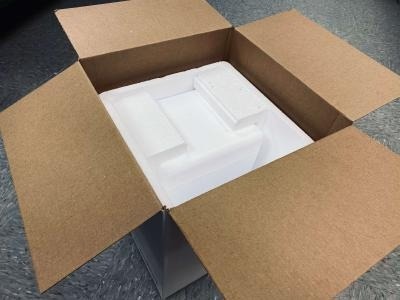Overview
HUREL® micro livers are self-assembling co-cultures (SACCs) made up of non-parenchymal (stromal) cell lines and primary cryopreserved hepatocytes. Colonies of hepatocytes form by themselves on their own.
Peer-reviewed studies have shown that the liver tissue constructs created using this patented method of liver cell culture have the longest lifespans, are the most phenotypically stable, and are metabolically competent.
Features
Metabolic competency
The feature most directly responsible for the HUREL Micro Liver’s superior translational predictivity for DMPK studies is its superior metabolic competency, which is derived in part from its multi-fold higher hepatocyte number and consequently greater cell density within the microtiter well
Phenotypically stable
The superior metabolic competency that separates data produced on the HUREL platform from that of primary hepatocytes cultured in suspension, in monoculture, in micropatterned arrays, and in 3D spheroids is the result of rock-solid, long-lasting phenotypic stability
Peer reviewed and validated
Leading pharmaceutical companies from around the world have used the HUREL micro liver models in dozens of publications, and they are essential to many contract research organizations’ services
Services
- Plated cells
- Dosing and maintenance media
- Spare lids
- Heat packs
- Temperature log
- Usage instructions
HUREL Micro Livers
Video Credit: Visikol Inc.
The packaging
A robust packaging technique is developed with viability in mind to guarantee that products are delivered to users without damage

Orders will be delivered in the distinctive Visikol packaging, which includes an inner and outer Styrofoam cooler. Image Credit: Visikol Inc.

Inner cooler arrives safely and securely nestled between two Styrofoam spacers. Image Credit: Visikol Inc.

Media, plate lids, and cells can be found within the inner cooler. Image Credit: Visikol Inc.
Usage Protocol
- HUREL® hepatic co-culture plates are shipped in a specially created arrangement to guarantee temperature control and leak prevention throughout shipment. For best product use, kindly adhere to the unpacking instructions.
- HUREL maintenance media (serum-containing media): 65 ml per plate
- It is advised to maintain the culture plates with the serum-containing maintenance media by changing the media every two days after the culture plates arrive and before assays. The maintenance media is advised to use in long-term assays (>7-day culture) to ensure cell stability.
- HUREL dosing media (serum-free media): 65 ml per plate
- For assays that can be completed in up to 7 days, the serum-free dosing media is advised. The media do not have to be changed for up to 7 days when conducting drug clearance and metabolite generation assays.
- HUREL® co-culture plates, Replacement lids, Unpacking & Maintenance Protocol, COA lot information, Packing slip
- Temperature recorder (disposable): 1) Connect the temp recorder to PC USB port, 2) Go to the USB drive and find the pdf output file, 3) Email the pdf output file
Box unpacking
- Take both medium bottles from the shipping container and warm the medium bottle labeled Maintenance Media to 37 °C
- Cautiously remove HUREL® hepatic co-culture plates from the shipping container. Keep cell plate orientation as it is packed. Do not flip over plates
- Transfer cell plates to the biosafety cabinet
- Only use cells under aseptic conditions. Follow “Unpacking HUREL® plate.”
- Remove the lid and peel off the sealing film
- Aspirate the shipping media from the plates using the aspiration protocol detailed below and replace them with 37 °C warm Maintenance Media. Refer to the table “Incubation volume” below for recommended medium volume/well
- Place a sterile replacement lid on the co-culture plate and transfer to an incubator for incubation at 37 °C and 5% CO2
Recommended aspiration protocol
- Medium aspiration should be performed using a low vacuum pressure
- Aspirator tips should never touch the bottom of the wells
- It is advised to aspirate and replace medium 3–6 columns at a time to prevent cells from drying out and to maintain function and viability
Unpacking HUREL plate
- Remove the rubber bands by opening the cell culture plate’s sleeve
- Remove the lid
- Peel off the sealing arm
Incubation volume
HUREL Human Pool™/ HUREL Human™/ HUREL Primate™/HUREL Rabbit™/ HUREL Cat™
Table 1. Source: Visikol Inc.
| Plate Format |
Hepatocyte Number/Well |
Recommended Intubation Volume |
| 384-well |
11,000 |
30-50 μL |
| 96-well |
30,000 |
80-100 μL |
| 48-well |
70,000 |
180-200 μL |
| 24-well |
188,000 |
400-500 μL |
| 12-well |
375,500 |
800-1000 μL |
| 6-well |
940,000 |
2000-2400 μL |
HUREL Dog™
Table 2. Source: Visikol Inc.
| Plate Format |
Hepatocyte Number/Well |
Recommended Intubation Volume |
| 384-well |
15,000 |
30-50 μL |
| 96-well |
40,000 |
80-100 μL |
| 48-well |
94,000 |
180-200 μL |
| 24-well |
250,000 |
400-500 μL |
| 12-well |
500,000 |
800-1000 μL |
| 6-well |
1,250,000 |
2000-2400 μL |
HUREL Rat SD™/ HUREL Rat WH™/ HUREL Minipig™
Table 3. Source: Visikol Inc.
| Plate Format |
Hepatocyte Number/Well |
Recommended Intubation Volume |
| 384-well |
8,000 |
30-50 μL |
| 96-well |
25,000 |
80-100 μL |
| 48-well |
59,000 |
180-200 μL |
| 24-well |
156,000 |
400-500 μL |
| 12-well |
312,500 |
800-1000 μL |
| 6-well |
780,000 |
2000-2400 μL |
HUREL Mouse™
Table 4. Source: Visikol Inc.
| Plate Format |
Hepatocyte Number/Well |
Recommended Intubation Volume |
| 384-well |
7,000 |
30-50 μL |
| 96-well |
20,000 |
80-100 μL |
| 48-well |
47,000 |
180-200 μL |
| 24-well |
125,000 |
400-500 μL |
| 12-well |
250,000 |
800-1000 μL |
| 6-well |
625,000 |
2000-2400 μL |